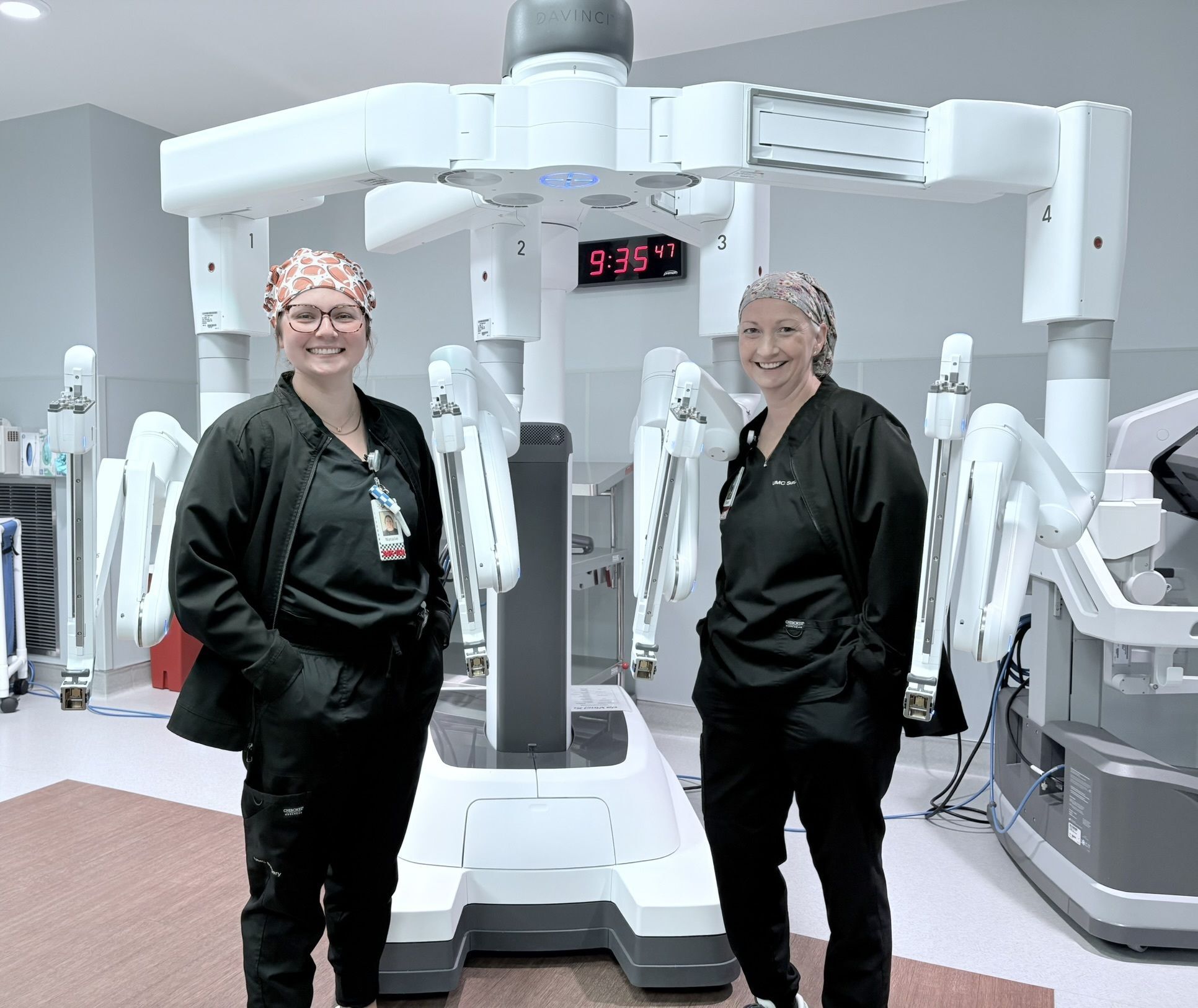The da Vinci Surgical System is a tool that helps surgeons perform a variety of surgeries including gynecological surgeries, urological, head and neck, thoracic, colorectal, cardiac and general surgeries. Because the da Vinci only uses small cuts, it’s less traumatic on your body, resulting in less pain, fewer complications and a shorter recovery time.

What is a da Vinci surgery?
A da Vinci surgery is when your surgery is performed using the da Vinci Surgical System, a machine that uses four thin robotic arms. The robotic instruments have a wider range of motion than the human hand. Surgeons can use the surgical system for a variety of procedures.
The machine is made up of three different parts:
- The console/control center. Your surgeon operates while seated at a console unit, using hand and foot controls and with a magnified, 3D, high-definition view.
- The patient cart. The cart holds surgical instruments and the camera.
- The vision cart. This cart has a video screen so that the healthcare providers in the room can see what’s happening during the surgery.

What’s the difference between a da Vinci surgery and an open surgery?
Use of the system makes your surgery “minimally invasive” (smaller incisions). The procedure uses small cuts (less than or equal to 1 centimeter long), tiny surgical instruments, fewer stitches and a laparoscope (a telescope) which is a thin tube with a light and a camera lens. This is different than traditional surgeries that use larger, more invasive cuts through skin, tissues and muscles.
What are the benefits of a da Vinci surgery?
The da Vinci System enables surgeons to perform even the most complex and delicate procedures through very small, precise incisions. Benefits may include:
During the procedure:
- Less blood loss.
- Less trauma.
- Smaller cuts.
After the procedure:
- Less pain.
- Less scarring.
- Fewer complications.
- Shorter hospital stays.
- Shorter recovery time.
- Quicker return to normal daily activities.
- Fewer infections.
Frequently Asked Questions
What kind of healthcare provider performs a da Vinci surgery?
Surgeons who use the da Vinci Surgical System go through additional training to learn how to use the machine.
How do I prepare for a da Vinci surgery?
You prepare for a da Vinci surgery the same way you prepare for an open surgery. Specific preparations depend on the type of surgery you’re getting, so you should ask your healthcare providers about the details.
How long does a da Vinci surgery last?
This depends on the procedure. On average, da Vinci surgeries tend to last an hour more than an open surgery.
Will I be asleep during the da Vinci surgery?
Yes. You will be under general anesthesia.
How effective are da Vinci surgeries?
Although they take longer and may cost more, da Vinci surgeries are just as effective as open surgeries.
How long will I be in the hospital?
How long you’ll be in the hospital depends on the type of surgery you have and your healthcare providers’ recommendations. Studies have shown that if you have a da Vinci surgery, you’re likely to have a shorter hospital stay and may go home on the same day.
How long does it take to recover from a da Vinci surgery?
Again, this depends on the type of surgery. Talk to your healthcare providers about how long your particular healing process might take.





